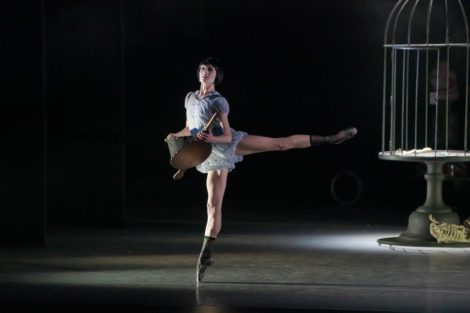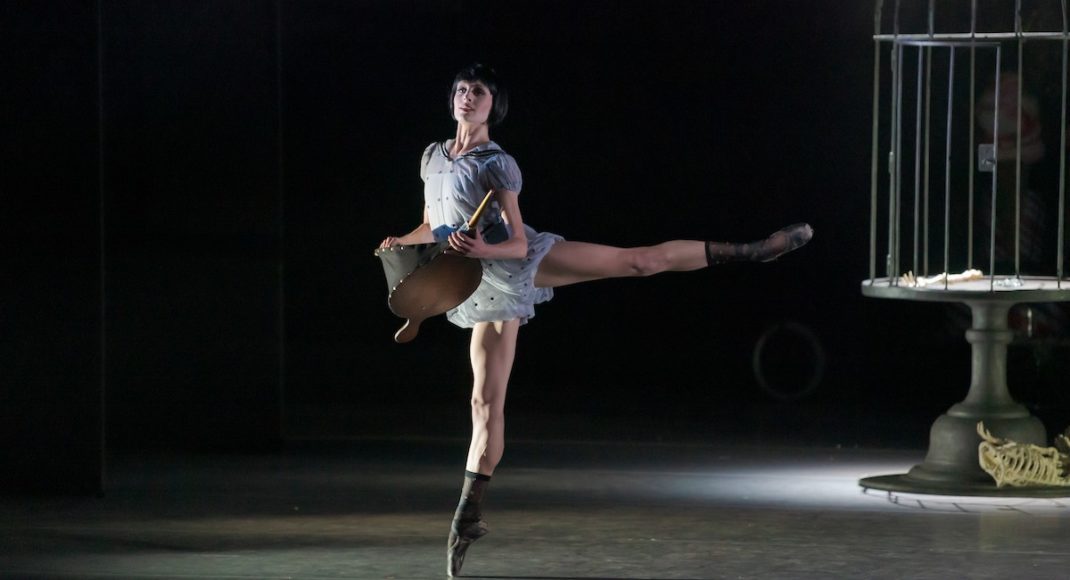6 November 2019. Opera House, Wellington
reviewed by Jennifer Shennan
Hansel & Gretel is choreographer Loughlan Prior’s first full-length ballet, though he has a number of accomplished short works (including a memorable Lark, for Sir Jon Trimmer and William Fitzgerald), as well as choreographed films (including Memory House, for Trimmer) already to his credit. Since this premiere, another of his works, The Appearance of Colour, was recently performed as part of Queensland Ballet’s Bespoke program.
The energised success of Hansel & Gretel reveals the close rapport developed between Prior and composer Claire Cowan, who has produced a colourful and affecting score. Right from the first sounds (‘applause’ from orchestral percussion to walk the conductor to his podium), it is clear that the choreographer and composer share a sense of humour and fun. Conductor Hamish McKeich and Orchestra Wellington miss not a beat or a feat throughout.
Design by Kate Hawley, together with Jon Buswell’s lighting, delivers some striking effects. The opening visual, projected onto a gauze front curtain, is the number countdown of a film reel (the grandchildren whisper to ask , ‘Is this a ballet pretending to be a movie?’). A number of references to black and white silent movies of the 1920s are cleverly choreographed into the first scenes, making fitting resonance from the accompanying orchestra in the pit. A prologue of wealthy characters strutting in the street contrast with the poverty of the family of Hansel, Gretel and parents, with the father unable to sell his street brooms to anyone. There is a poignant scene of the hungry family around the table in their cabin, though the following long love duet between the parents seems to stall the choreographic pace somewhat.
Later, black and white scenes turn into the garish colours of cancan Candyland, aided and abetted by the Ice Cream Witch whose hurdy-gurdy bicycle is a creation Heath Robinson would have been proud of. A large cast of Dew Fairies, a Sandman, numerous confectionery and gingerbread assistants, and spooky creatures of the forest all offer a number of divertissements of entertainment and humour. There are echoes of the 1930s now, of Busby Berkeley film scenarios, with deliberate extravagances that send it in the direction of pantomime, leading, by their own admission, to sensory overload of props and costumes.
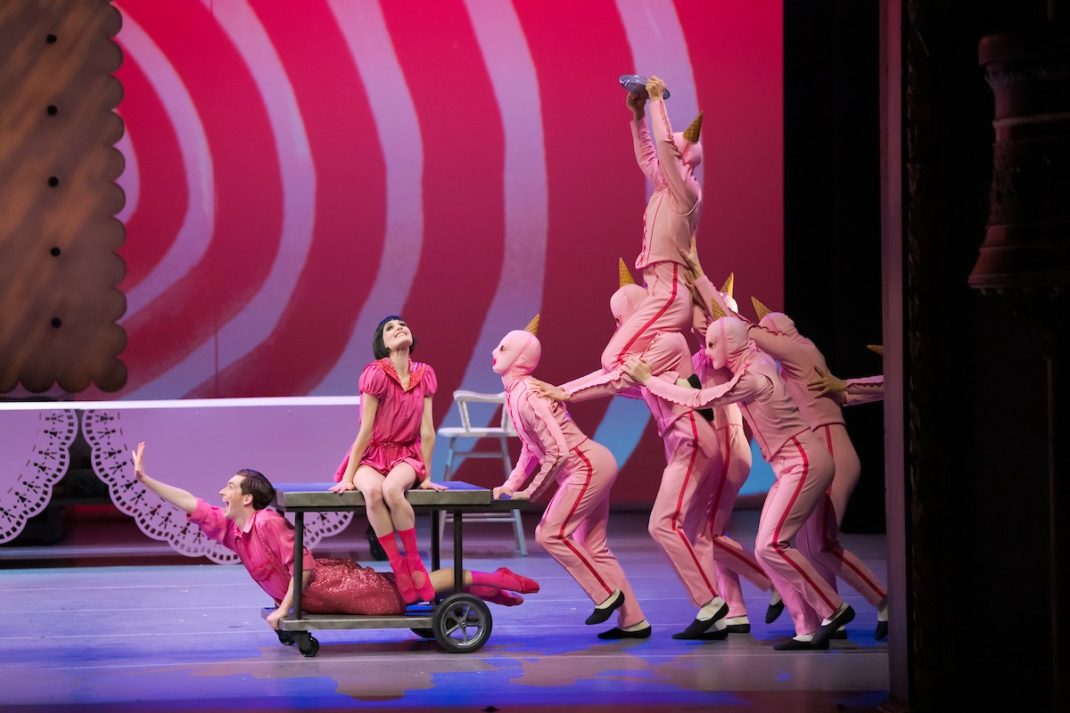
Spectacle is preferenced over sustaining the narrative with its dark themes of the original version of the Grimm brothers’ tale. In that regard, Prior has chosen to follow casting of Humperdinck’s opera of the late 19th century, as well as the recent choreographies by Liam Scarlett for the Royal Ballet and by Christopher Hampson for Scottish Ballet. In those versions, the familiarity of the children’s father bullied by a scheming cruel stepmother is converted to their simply being poor but loving parents. This results in a weakening of the dramatic bite and thematic link of evil between both Stepmother and Witch (read in some interpretations as alter-egos of each other).
Different birds are dramatically involved in the original tale—sitting on the roof of the family cottage, stealing the trail of breadcrumbs, leading the children to the Witch’s lair, and finally back home. In this production the only birds are portrayed in a brief scene by child extras, very fetchingly costumed in raincoats with beak-shaped hoods, and carrying brooms to sweep up crumbs. Perhaps more could have been made of the avian potential in the story since birds are often convincingly stylised into ballet.
Highlight memories are of Hansel and Gretel—or should that be Gretel and Hansel since it’s the girl who always takes the initiative and makes sure little brother is in tow —with Shaun James Kelly as a naïve and playful boy, Kirby Selchow as the feisty older sister. The dazzling Mayu Tanigaito as Queen of the Dew Fairies, delivers radiantly, but also easily shifts into the syncopations of the jazz references that Prior and Cowan have skillfully introduced as cameo sequences.
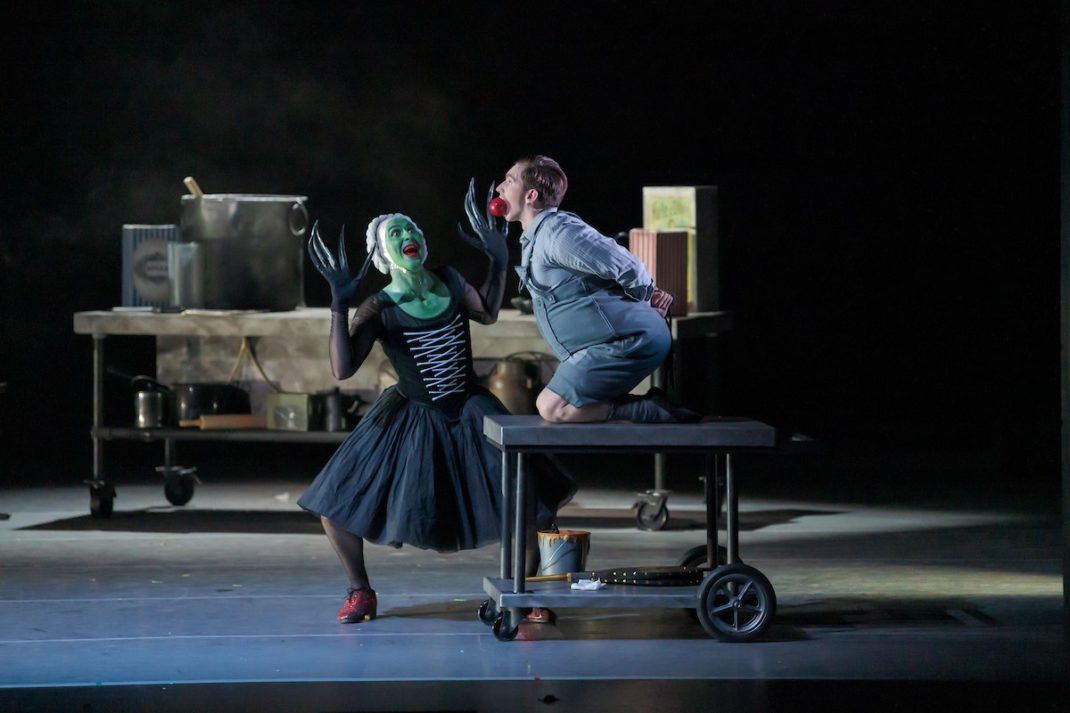
The Ice Cream Witch is played by Katharine Precourt who, with mobile expressive face, clearly relishes the role. The Transformed Witch, played by Paul Mathews, is in full pantomime mode and takes hilarious advantage of the satirical strokes the choreography offers (including the tossing of a pair of pointe shoes into the cauldron, together with a large manny rat that proves inedible but will doubtless flavour/poison the stew). Mathews always inhabits rather than just portrays his roles and here he exaggerates wonderfully without ever wasting a gesture.
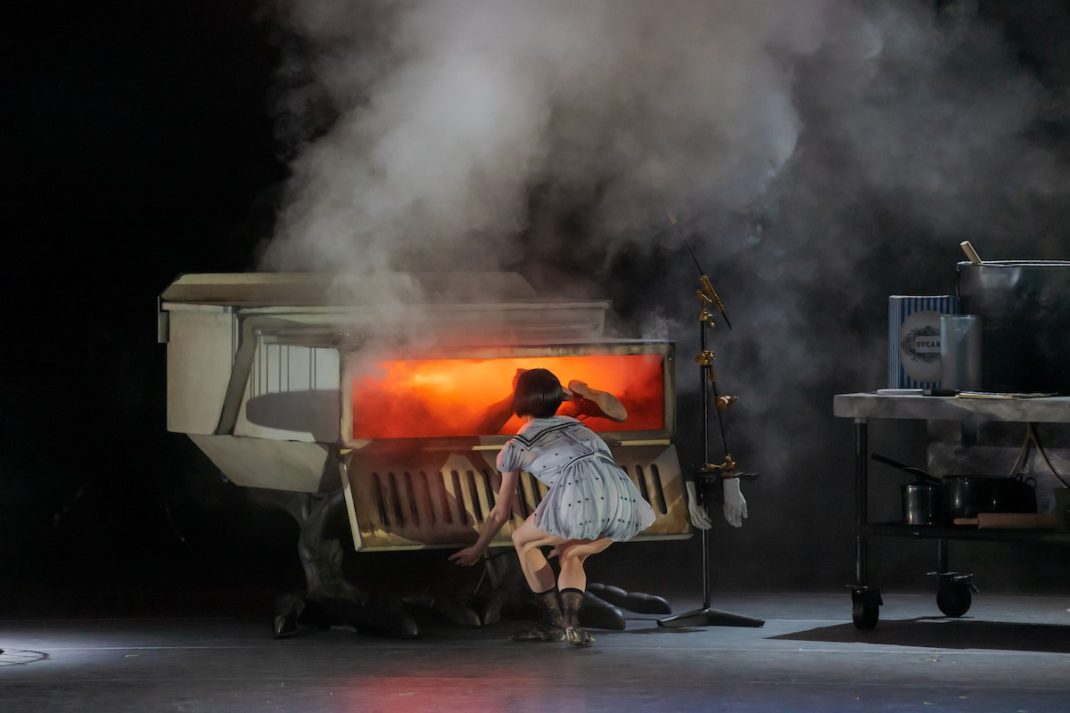
Thank goodness for curtain calls in character. The dancers have clearly had a rollicking good time in this production which will certainly entertain audiences in the forthcoming national tour.
Jennifer Shennan, 12 November 2019
Featured image: Kirby Selchow as Gretel in Hansel & Gretel, Royal New Zealand Ballet, 2019. Photo: © Stephen A’Court
